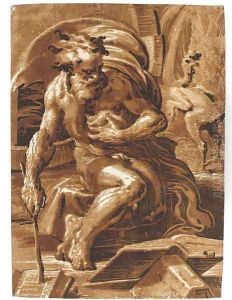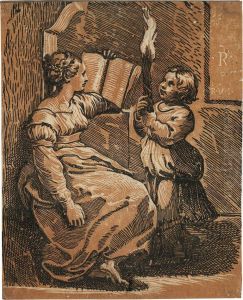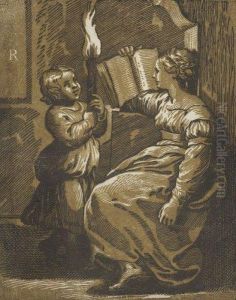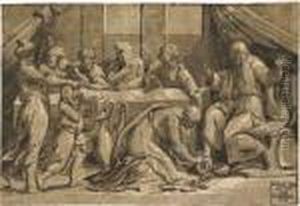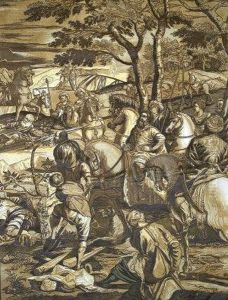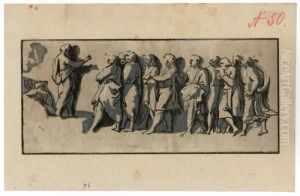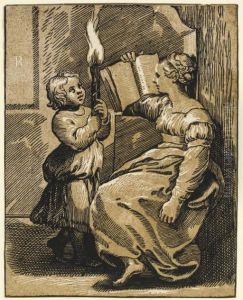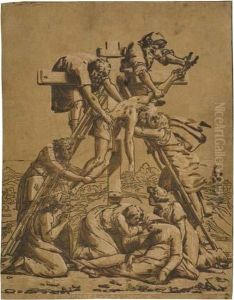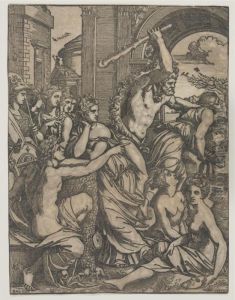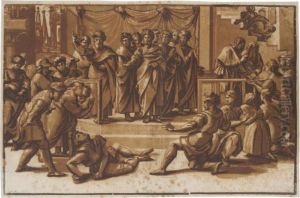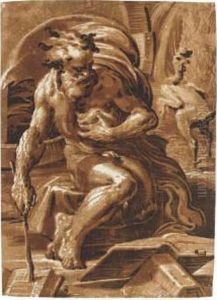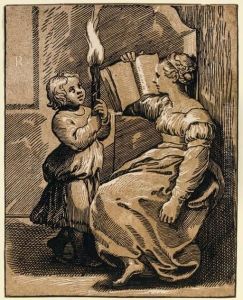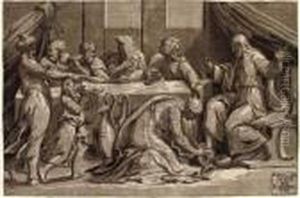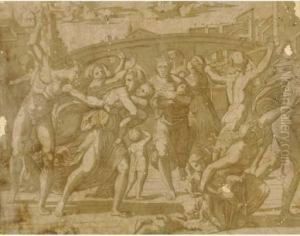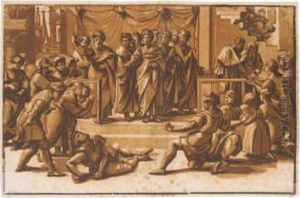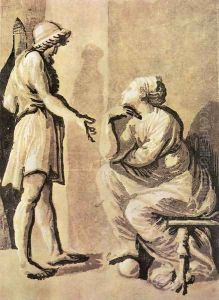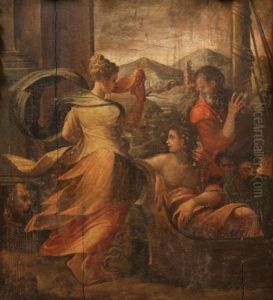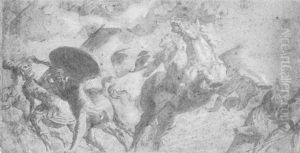Ugo Da Carpi Paintings
Ugo da Carpi was an Italian printmaker and painter, known primarily for his pioneering work with the chiaroscuro woodcut technique during the Renaissance period. Born around 1480, possibly in Carpi, near Modena, his early life and training remain largely undocumented, reflecting the general scarcity of information about artists from this era outside the most famous figures. Despite the limited details on his early years, Ugo da Carpi emerged as a significant artist in his own right, especially in the realm of printmaking. Ugo da Carpi is credited with introducing the chiaroscuro woodcut technique to Italy, a method he may have learned or adapted from German printmakers. This technique involves using multiple woodblocks for different tones of the same color, allowing for a more nuanced representation of light and shadow, hence the term chiaroscuro, which means 'light-dark' in Italian. His work with this technique significantly contributed to its development and popularity in Italy, influencing many artists of his time and later. One of his most famous works is the chiaroscuro woodcut of Raphael's 'Diogenes.' Ugo da Carpi claimed to have received the exclusive privilege from the Pope to use this technique, although documentation to support this claim is scarce. His assertion, however, underscores the competitive and proprietary nature of artistic techniques during the Renaissance. Throughout his career, Ugo da Carpi produced a number of prints that demonstrated his mastery of the chiaroscuro technique, earning him a place among the notable printmakers of the Renaissance. Despite his contributions to the art of printmaking, detailed records of Ugo da Carpi's life and career are sparse, and much of what is known comes from his surviving works and a few contemporary accounts. He is believed to have died around 1532, leaving behind a legacy that would influence the direction of printmaking and the visual arts in Italy and beyond.
